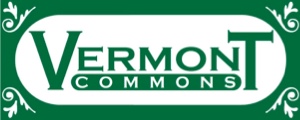The May VCCA Meeting was held last night at Cafe Ginger. If you missed it, you can still read the May VCCA Meeting Recap here.
Studies show that neighborhoods that have Citizen Patrols see drops in crime. Check out the newsletter for more information about joining the Citizen’s Patrol.
The Spring Picnic, hosted in collaboration with Park Civic, starts at 5pm Saturday, May 16th at 1605 Woodhead. Check out the newsletter for more details – there will be face painting and lots of fun. Please bring a dish to share, your own chair, and a beverage of choice.
The election of VCCA officers is in June. If anyone is interested, please let us know. It would be great if someone is interested in taking over as president. We are also in need of a secretary, a Vice President who posts to NextDoor, and more block captains. Any help with finding speakers would be appreciated as well!
Bill King, a Mayoral candidate, dropped by the meeting. He expressed concerns about the city’s deficit and financial problems hindering our ability to address infrastructure issues like the terrible roads we have, and discussed the growing revenues from property taxes and utilities that could be redistributed. He also talked about the police department, noting that command officer numbers have increased while general police numbers have decreased, which could help lead to the increase in unsolved crimes we’ve seen. The VCCA will have a Mayoral candidate night in September where all candidates can stop by and we can meet with them and ask questions.
The speaker for the meeting was Anna Mod, a historic preservation specialist with SWCA Environmental Consultants in Houston. She wrote a book that’s part of a national series called Building Modern Houston. Ms. Mod shared some stories of post-war Houston through the lens of changing architectural design across the city. Houston grew significantly after the war, with the space program and oil boom, and we see so much modern architecture here because of that.
Buffalo Bayou, which flows from Galveston Bay, has water deep enough for large ships to transport materials deep into the center of Houston. While Houston did so much trading and working with Galveston, the Houston city fathers were becoming more irritated with Galveston for having so many tariffs levied. Houstonians sold cattle, cotton and timber to establish more inland trade through infrastructure and rail, strengthening the core of the city as a center of commerce. Texas entered the oil trade in 1901 and all of Houston’s infrastructure building out helped to better serve and utilize the city. From its early beginnings, Houston has grown as a city of commerce, industry, opportunity and trade.
Modernism really started, architecturally, with art deco. In 1922, this style started with a design for the Chicago Tribune building. The design from Eliel Saarinen, which was deco/neo-gothic, didn’t win the competition but this style of building is seen everywhere, as in the Gulf Building in Houston, constructed in 1929.
The River Oaks shopping center (1939) offers another view of the art deco/modern style with nothing ornate to the building designs, and constructed with a view of driving visitors rather than an urban, walk-up feel.
Once we got to the 1950s, there was a great jump in scale. The Rice stadium was designed and constructed in 11 months. Rice had a championship team in 1949, which is part of why the new stadium came to be. In this time, exposed concrete became popular rather than concrete covered in red brick, as this style celebrates the innovations of architecture. Rice was one of the first double-decker stadiums built.
Another new form seen after the war was suburban campuses, where companies leave downtown and moved further out. Schlumberger’s 1953 campus was an example of that style. And, there’s still development taking place at this time with new buildings downtown. Some critique modern buildings as being dumb big boxes, but there are examples, like the Bank of Southwest near the reflecting pool and City Hall, which incorporates both boxy style and classic three-part structure with an entrance, main body, and a cornice.
Ms. Mod shared a great deal more facts and photos, but unfortunately the images could not be published here as they are copyrighted. Here are some additional fun facts about Houston:
- The first word said on the Moon was “Houston,” which is why mission control received historical status only 30 years after construction. Most historical structures wait 60 years after construction before receiving designation.
- There were some modernist houses before WWII, but often cars lived outside in carports or on the street. Cars only came “into” the homes after the war, living in garages or attached carports.
- Riverside Terrace was one of the first naturally integrated historic neighborhoods in Houston.
- Glenbrook Valley near Hobby airport is the largest post-war historically designated neighborhood in the country.
- High-rise towers became popular in various areas in Houston in the 1960s and 1970s, even with the expanse of land that could be built on in Houston.
- As with the continuing trend of industry in Houston, all of our skyscrapers came from or were built by one oil company after another.

